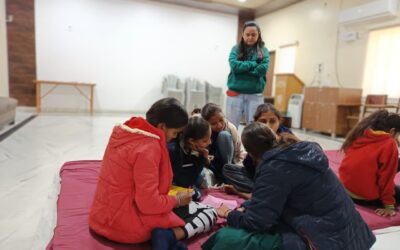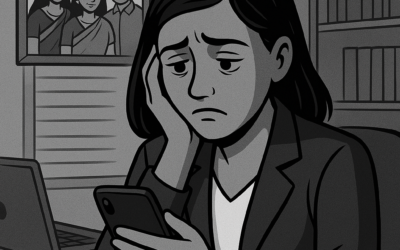In picture: A busy marketplace
The idea of development has often perplexed me. I joined India Fellow out of elongated boredom and to seek novelty. It felt like an exciting opportunity to explore what is called the ‘development sector’ or ‘social sector’. Social development work primarily comprises of interventions at a community level as well as engaging with structures at a macro level to address root causes of inequity, injustice, and oppression.
Working with a grassroots impact organization that believes in community resilience as a cornerstone for designing every intervention, the idea of development started getting an outline for me. But the overall picture is still quite ambiguous. From the insights gained from co-fellows working with other such organizations on ground, it was clear that the community is not a well-defined aspect of development interventions. And it made sense, because community doesn’t emerge out of thin air.
As this paper puts it more precisely,
“If society needs ‘community’, and community doesn’t necessarily just happen, what is needed to help bring it about? How does community work support networks and promote greater connectivity?“
At a fundamental level, any community is based on interpersonal relationships, identity, and a sense of belonging. Community development is based on the values of human rights and social justice informed by equality and diversity. Several theories guide community work, some of which are systems theory, anti-oppressive practice, indigenous world-views, and anti racism.
How Do We Define Community?
Yet, the persistent question remains – how do we define community when working on development. Because communities are many individuals with diverse realities. Dissecting it further, there is an interconnectedness of individuals and their environments. Various systems including micro-systems (family, friends), meso-systems (neighbourhood), exo-systems (local government), and macro-systems (cultural norms), interact to shape individual experiences. This makes it far more complicated to design an optimal intervention as it requires consideration at multiple levels.
For instance, I am working with a women-centered program that believes in challenging the status quo by empowering resource-poor women. The way we do this is by bringing them into non-traditional livelihood (NTL) sector of driving, thereby challenging the age-old patriarchal notions in the region. I often wondered what non-traditional even means in common language.
Diving in deeper about why we need a non-traditional approach, I came across an exploratory study that answers the question and at the same time, also makes it clear that its scope may still have limits. The study took a sample size of less than 50 NTL practitioners, covering only urban geography and formal employment. While informal sector engages nearly 70% of women. The closest theory, therefore, that can inform inclusive community-building practices can be that of intersectionality.
Intersectionality
The term intersectionality was coined back in 1989 by American civil rights advocate, Kimberle Crenshaw. This theory acknowledges individual experiences of discrimination and privilege within a community, emphasising that people do not experience identity in isolation but as a complex interplay of various social categories. It is an excellent analytical tool for understanding how different forms of social stratification such as race, gender, class, and caste intersect to create unique dynamics of privilege and oppression.
But this brings us to the question that in a country like India, with a population of 1.4 billion, a size that of the entire European continent, devising a community-based intervention keeping in line with inclusion is not merely an intense logistical task; it is an operationally challenging endeavour.
More often than not, the struggle ends up in balancing the competing needs and priorities for enabling a certain community. This also allows a vast space for ‘tokenism’ which can be detrimental in the longer run. It can be particularly seen with interventions designed for women’s empowerment. Ranging from free transportation to exaggerated celebrations on women’s day, the question of resilience for the community in question remains unanswered. This overemphasis on identity can very well leave behind other sections of the society.
The Problem
Most interventions have an underlying note that starts with what is wrong and not what is strong. There is an urge to begin with what has been the problem. This process even though unintended, leads to a top-down approach wherein the community is not defined by their positive traits, capacities and what they can bring to the solution but by their deficiencies and issues. In the words of Cormac Russel
“They then start to internalize the map that the only way that anything is going to change for them is when some outside expert with the right program and the right money comes in to rescue them.”
Intersectionality helps to understand a target group but in practice it is seldom clear where a community starts and where it ends. Who will be in the community, who will not? Does it include those who come with some pain points? Or is it the common identity and shared values which form a community? For grassroots impact organizations, these are probably the most crucial question to answer while making sense of societal stratifications. If community resilience is a goal, how can we practice true inclusion, given India’s dynamic diversity. Because it can be hard to gauge and achieve.
Let me know what you think, in the comments below.




0 Comments